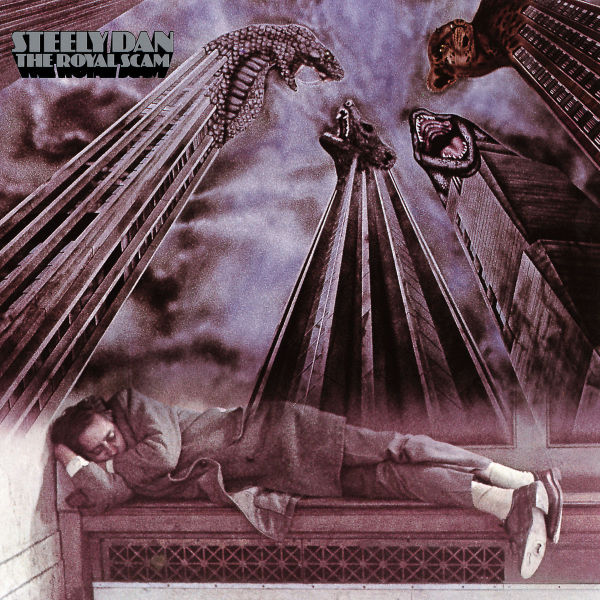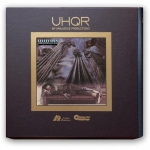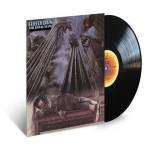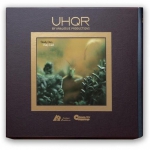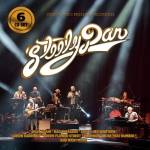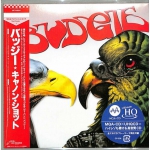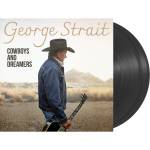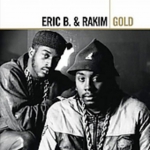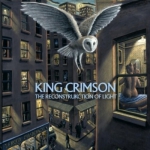 Fred C. - 01.05.2021 Fred C. - 01.05.2021  When I ordered this CD, I received the 1999 remaster, which is the best CD-version of The Royal Scam. I have no complaints of significance about its sound quality.
Based on my investigation, only three sets of digital masters were made for Steely Dan's early studio albums: in 1981-1982, in late 1985, and in 1998. The 1981-82 digital masters were made from the original stereo analog masters using a 16-bit, 44.1 KHz digital recorder with the notorious stock input filters, which had phase nonlinearities and produced dry-sounding recordings with mediocre spaciousness and imaging, which can be heard on Citizen Steely Dan and The Very Best of Steely Dan.
The 1985 digital masters were also made from the original stereo analog masters using a 1st-gen (16-bit, 44.1 KHz) digital recorder, but it was equipped with Apogee's linear-phase aftermarket input filters, which were introduced in about September 1985 and gave 1st-gen digital decks the potential to produce clean, detailed recordings with good spaciousness and imaging. Unfortunately, by 1985, the original stereo analog masters, except for Katy Lied, Aja, and Gaucho, had deteriorated too much to enjoy due to improper storage conditions. Katy Lied was protected from tape deterioration to some extent because it was dBx-encoded, and the corresponding CD (MCAD-31194) is excellent, but the 1999 remaster is slightly better. Aja was in borderline condition, and the corresponding CD has a lousy high end with a peaky boost. Gaucho was only about five years old in 1985, and was in decent shape, but the digital master ended up with a slightly high speed (pitch), which is noticeable during the slower songs.
The 1999 remasters were made from 24-bit copies of well-preserved analog copies of the original stereo analog masters. Roger Nichols, Dan's main engineer, copied each original stereo master when it was new, stored all of the copies in his personal archive, maintained them properly, and digitized them in 1998 using an Apogee AD-8000 24-bit ADC. He used a UV-22 down-sampler to convert the 24-bit recordings to 16-bit recordings with a perceived 20-bit dynamic range (to avoid fade-outs with audible cut-offs, for example). I've heard all of the 1999 CD-remasters except Countdown and Pretzel, and they're all excellent.
The Greatest Hits CD contains four of the most popular songs from Royal Scam (Kid Charlemagne, The Fez, Doctor Wu, and Haitian Divorce), and it's very clean and has good detail, spaciousness, and imaging. It might be a little cleaner than the 1999 remaster because its digital master was made in 1993 or earlier from an excellent 1978 analog master using a phase-coherent conversion process (probably an Apogee AD-1000 20-bit converter and a UV-22 down-sampler, which were introduced in 1993). It might have been digitized before 1993 using a 1st-gen digital recorder with Apogee filters.
To get the best sound quality from CDs, just play them with the right audio polarity through a popular modern player or DAC. (It can take a long time to get sufficiently "tuned into" a CD to identify its polarity. But when you do get tuned in, flipping the polarity can make a big difference.) I have a $100 2017 Nobsound Bluetooth 4.2 Lossless Player, and it's the last player I'll ever want, unless someone comes out with an equivalent with an audio polarity control (preferably on the remote control). Unfortunately, polarity controls seem to be reserved for professional gear and high-end consumer gear, although you don't need a high-end system to appreciate proper audio polarity. So, to invert polarity, you could use an audio editor to invert WAVs or FLACs (lossy files don't preserve the waveform, so they sound equally lousy with either polarity), or you could flip the polarity of each speaker connection. Dan's Alive in America has inverted polarity and sounds profoundly better with its polarity corrected, even on my cringe-worthy system.
|

